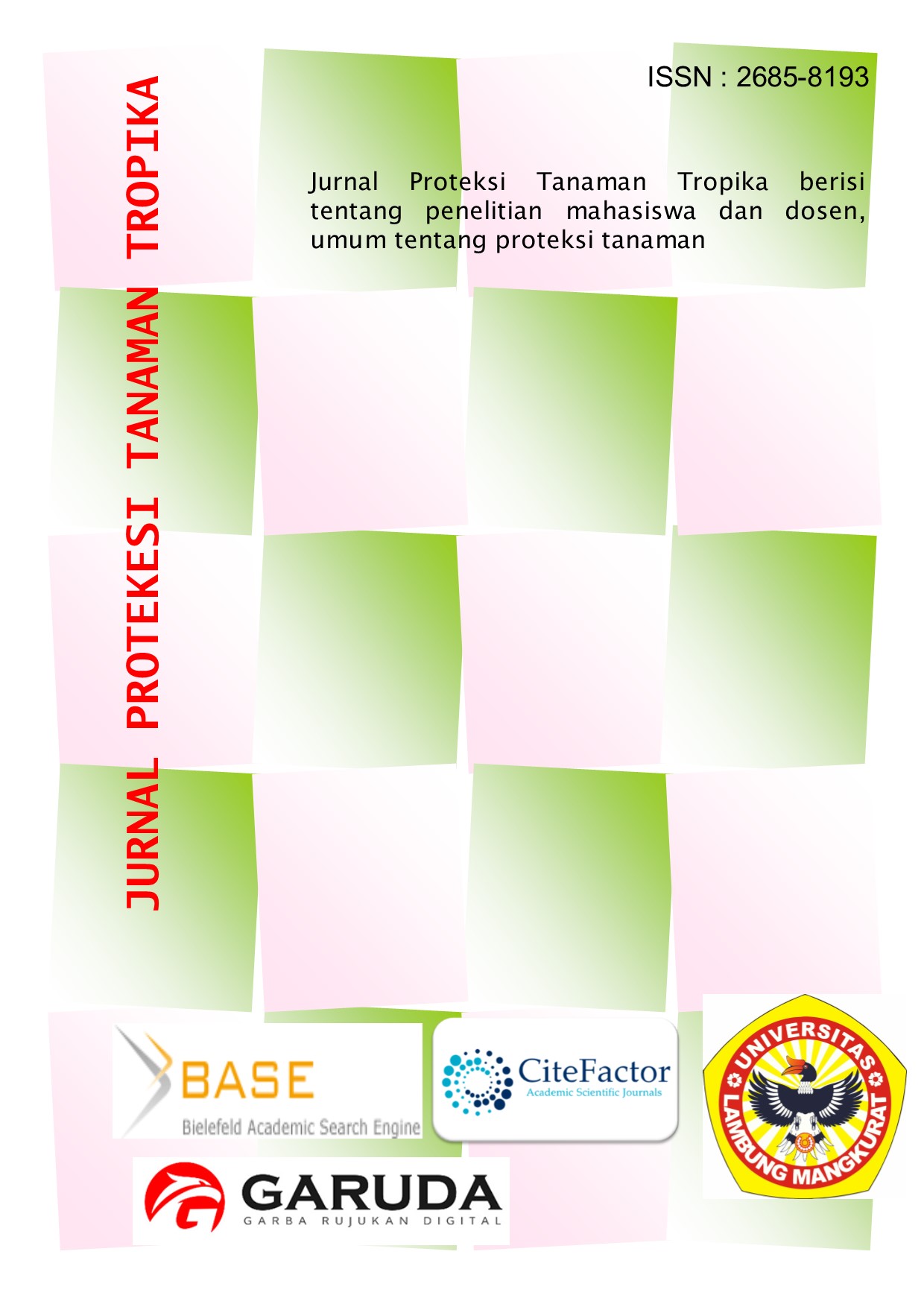PGPR Application Time, Streptomyces sp. and Bokashi Kayapu to control leaf spot disease (Cercospora oryzae) in red rice (Oryza nivara L.) in Wetlands
Abstract
The main pathogen that causes red rice disease is Cercospora oryzae which causes leaf spots. This research aims to determine the role of Streptomyces sp., Bokashi kayapu and Plant Growth Promoting Rhizobacteria (PGPR) in reducing the severity of bacterial infections of red rice in wetlands. This study used a completely randomized design (CRD) with six treatments and four replications: control, PGPR and Streptomyces sp. and Bokashi kayapu at the age of 60 days, 70 days, 80 days, 60 days and 70 days. Each treatment was able to reduce the incidence of leaf spots caused by the Cercospora oryzae fungus by at least 69.87% compared to 81.68% in the control group. Each treatment also reduced disease severity by 25.1% compared to 32.40% in the control group. Apart from that, plant height increased by 145.5 cm compared to 136.75 cm in control. The number of grains/panicles could increase by 316 grains compared to 267 grains in control. And can increase the weight of 100 grains weighing 1.60 g while the control is 1.45 g.






